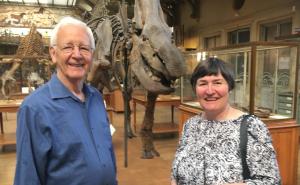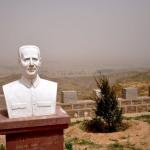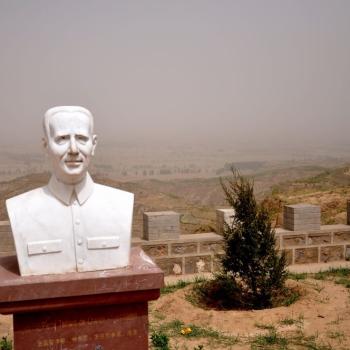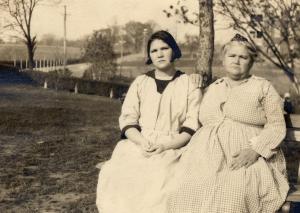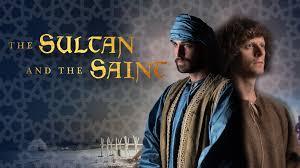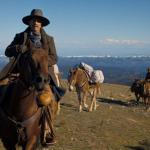Back in March (2024) I had the privilege of interviewing Frank and Mary Frost of Frank Frost Productions about their highly anticipated new documentary “Teilhard: Visionary Scientist.” The film, which promises to be a captivating exploration of Pierre Teilhard de Chardin’s life and work, will be available on PBS Maryland on May 19, 2024. From May 20, 2024 – May 2026, you can also catch it on the PBS App. For the latest updates, be sure to visit the Teilhard de Chardin Project.
In case you are not yet familiar with Teilhard:
Pierre Teilhard de Chardin (1881-1955) was a remarkable figure, a French Jesuit priest, scientist, and theologian. His innovative integration of Christian theology with evolutionary theory was groundbreaking. Born in Sarcenat, France, he joined the Society of Jesus in 1899 and was ordained as a priest in 1911. Trained as a paleontologist and geologist, Teilhard made significant contributions to the field of human evolution, including his participation in the discovery of Peking Man in China.
His theological work sought to reconcile faith with science, proposing that the universe and humanity are evolving towards an ultimate point of divine convergence, which he called the Omega Point. This concept was central to his belief in the cosmic Christ and the idea that the world is moving towards a state of spiritual and physical unity.
Initially met with controversy within the Catholic Church, Teilhard’s ideas have since evolved and are now widely recognized for their profound impact on contemporary theology, philosophy, and the ongoing dialogue between science and religion.
__
My interview with Frank and Mary Frost:
Frank and Mary Frost with fossil discovered by Teilhard at the National Museum of Natural History, Paris.
Photo credit: Frank Frost Productions
Sr Rose: This project has taken a long time to develop. Tell us why a documentary on Teilhard appealed to you that led you to dedicate so many years to realizing the film.
Frank and Mary Frost: What appealed to us was part inspiration and part practicality. Teilhard’s vision inspired us, his hope-filled spirituality, his embrace of the world, and his synthesis of science and faith. It took so many years to finish the film, however, because of the financing factor. We could have finished much faster if we had found the funding faster. We spent more than half our time in the early years fundraising. Nevertheless, despite the lack of funding slowed us down, the extra time also led to a much more enriched understanding of Teilhard.
SR: Why did you travel to China for research and filming?
FMF: China was a special experience. Most people tend to think of Teilhard as a spiritual visionary and mystic, thanks to the immense popularity of his book Le Milieu Divin, and how he has been presented by biographers. But when we began our research at Georgetown University’s Woodstock Library, we delved into their George Barbour collection (Barbour was a geology colleague of Teilhard in China), and we found boxes of papers written for scientific publication by Teilhard, with maps and diagrams, and attention in great detail to soil and rock formations. It was immediately apparent that he was as much a down-in-the-dirt scientist as a spiritual writer, and we would have to cover that dimension of his life. And that would require going to China.
SR: Please tell us about these experiences and how they contributed to the film.
FMF: When we first went to China for research, we had one Chinese contact, an advisor we had taken on at the suggestion of another Teilhard scholar. You Hailu is a senior researcher at the Chinese Academy of Science’s paleontology division, IVPP. On arriving in China, we knew only that we wanted to visit the site where Peking Man was discovered and the desert in Inner Mongolia where he wrote his famous “Mass on the World.” When we arrived at Hailu’s office, he first introduced us to the head of his division, Gao Xing. Gao gave us a book he had recently finished on the Shuidonggou site, which Teilhard and his fellow Jesuit, Emile Licent, had discovered a century before. He insisted we go there and arranged for us to be escorted by a guide. Hailu then took us down the hall to meet Hou Yamei, a woman researcher with a Teilhard poster on her wall. Her special responsibility was Salawusu, known to Teilhard as Shara Osso Gol, where he had not only written “Mass on the World,” but had excavated hundreds of major fossils now on display at the Museum of Natural History in Paris. She, too, arranged for us to be met and escorted. In sum, we had just discovered that Teilhard was, and is, highly revered in China, and is considered a co-founder of paleontology in China. At museums in five locations in China, including the IVPP, he is today featured with posters and busts that honor him.
This had a major impact on the final shape of our film. And, yes, we had a wonderful Jesuit translator in China for both our research and filming trip. Jerry Martinson, SJ, now deceased, was a California Province Jesuit who spent 40-plus years in Taiwan and was fluent in Mandarin. He had a wonderful personality that engaged the Chinese people we encountered. They were impressed with his fluency in speaking their language. On our shooting trip, we had the help of Eddie Siebert, SJ, head of Loyola Productions in Los Angeles, and a teacher at Loyola Marymount University. His chief cameraman, Erik Lohr, did the filming.
SR: What was it like to walk in Teilhard’s steps? To visit his home in France, where he worked in China? Were there any obstacles? Any memories that stand out that didn’t make it into the film?
FMF: Marie Bayon de la Tour, a great-niece of Pierre Teilhard, suggested that to truly understand her uncle, we needed to walk in his footsteps and offered to host us on a guided tour of Auvergne, where Pierre was born and grew up. She was right. Our understanding of the man took on new horizons, and our ability to imagine his life in these settings was immensely enhanced. This experience also allowed us to make specific plans for shooting that would be critical to the authenticity we were seeking to communicate in the film.
SR: How challenging was it to edit the film that comes in at two hours, rather long for the standard documentary? Why did Teilhard merit the extra time?
FMF: Editing the show was difficult for multiple reasons, one of them being the length of the program. Our first rough cut ran three and a half hours for a show we were targeting at two hours. Simply trimming was not enough. We had to restructure the show, omitting some interesting and revealing parts of Teilhard’s story.
But, even before that, we had to meet the challenge of visualizing a story set a hundred years ago with limited visuals. This led us to adopt the style of shooting locations today where Teilhard had lived and worked before and to intercut that with archival and “metaphorical” imagery, which would need to be found and created. And we wanted to communicate the drama of his life, not just provide information. This added to the creative challenge. It also meant the story must be set up within its historical context. We further wanted to tell a story that covered the span of his life, not just one discreet portion of it. We knew this could not be done effectively in one hour or even an hour and a half. So yes, Teilhard’s story merits the two-hour length.
His story is so interesting that I think if we were starting over and could raise the financing, we would go for a four-hour miniseries.
SR: What was it like to interview Teilhard’s relatives? How did you manage to connect with them?
FMF: We became acquainted with Teilhard’s relatives early in the production. I wanted to copy original documents that were in Georgetown University’s Special Collections library and needed family permission. The head of Special Collections gave us the email address of Marie Bayon de la Tour, the head of the Teilhard de Chardin Nephews Association. Marie cooperated fully with us after a long delay before answering my letter. This meant that she had to persuade the other members of the family, who owned three family estates in Auvergne, to cooperate as well. One of these was her father, Henri du Passage, owner of Les Moulins, who welcomed us with open arms and who we ended up interviewing a few years later, just months before he died in his early 90s. When we went back to shoot, the owner of Sarcenat, where Teilhard was born, gave us the full run of the house. The family that owns Murol, the third estate, received us with open arms, and both families provided us with a marvelous mid-day feast! Marie’s cousin, Olivier Teilhard de Chardin, is a diocesan priest in Paris, who we interviewed at length. The spirit of Pierre Teilhard de Chardin lives on in those descendants!
SR: What do you hope audiences will take away from the film?
FMF: We hope viewers of our film come away with a renewed sense of hope, despite the world’s severe difficulties, based on a realization of God’s energy at work in the evolution of the cosmos. We want them to recognize a man for whom science and faith were one and to recognize the importance of scientific thinking in informing our own spiritual experience. We want them to value the totally incarnated world as sacred, accept their co-responsibility for our planet, and imitate Teilhard in his respect for women.
We also want to inspire them to pursue further understanding of Teilhard and what he might come to mean to them.
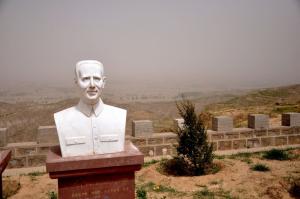
SR: How might Teilhard’s story appeal to seekers today?
FMF: We think Teilhard’s story might appeal to people who, in one form or another, seek meaning in their lives through spiritual search. It might appeal to a youthful generation drawn to the technological developments that promise enhancement to our lives to see that science and technology can have a spiritual dimension. And those who are interested in protecting and preserving the earth. It is evident that for many people, Teilhard already appeals to them with his inspirational quotes about the meaning of love. Our show should help them relate to him because of his human struggles with authority and desire to serve something larger than himself.
SR: Teilhard, as you express so well in the film, struggles with his Jesuit commitment, his connection to God as “the absolute,” and his obedience to his Jesuit superiors about his writings. What does this tell theologians today, especially since Vatican II, Benedict XVI, and Pope Francis have positively acknowledged his contribution to science and faith?
FMF: Teilhard’s writings and reflections stand out because of his integrity and determination to be true to himself and his commitments. Theologians, we hope, will embrace the direction of Vatican II’s “Constitution on the Church in the Modern World,” which reflects Teilhard’s love of the world, its joys, and sufferings. John Paul II recognized the validity of evolution, Benedict XVI sees Teilhard as a model priest as reflected in his Mass on the World, and Francis builds on his insight that the universe is a whole and that we are co-responsible with God for it.
SR: How was Teilhard a mystic, scientist, and faithful son of the Church and Jesuit? Why did it take people so long to appreciate him?
FMF: Part of the appeal of Teilhard’s appeal is his mysticism, which is not “out there” but deep “in here, in this world.” He makes us believe that we can all be mystics of a sort. While he was a thorn in the side of his top Jesuit superiors (perhaps because they feared a repressive Vatican), he was loved and appreciated by many of his peers. And it’s notable that, shortly after his death, American Jesuits who had kept their distance were soon on the bandwagon of praise for him. So, it did not take long for the rank and file of religious folks to appreciate him, starting just a few years after his death when his books became available. But he was attacked by scientists and by conservative Catholics, and his star faded. Now science is catching up with Teilhard, and Vatican II reflects his spirituality, and his star is on the ascent again. The internet, Webb Telescope, Artificial Intelligence, and Transhumanism are a few developments driving this new recognition of Teilhard and the Noosphere.
SR: What happened to the last young woman who wanted to return him to health? She seems to have dropped off the story.
FMF: It’s a shame that we could not cover the women in Teilhard’s life in more detail to stay within our two hours. The woman who wanted to nurse him back to health was Rhoda de Terra, who was a frequent companion during his years in the U.S. Teilhard dies in her apartment. However, the story’s arc did not allow for a sidebar on her relationship with Teilhard.
SR: Are you planning a study guide for the film? If so, when might we expect it?
FMF: We would love to have a study guide. When it can be done and with what collaboration with others is yet to be determined. So, there is no projection on the timing for this.
SR: Teilhard appreciated women and their friendship. What does this say about the role of women in the Church today, or that genuine friendships might exist between clergy and women? Are there other examples of this kind of friendship?
FMF: Teilhard presents a wonderful model of how a priest can be and should be free to experience healthy emotional intimacy with women (and men) without compromising his vow of celibacy. He had several very close friendships with women (3 of them American), and all those women were strong, independent people. He had respect for them, and they respected him. The hierarchical Church must take notice. Women are not a threat to men; they are enrichments. And they can make much greater contributions to the Church when they are allowed authority.
SR: Would you like to mention who was the most helpful on this journey and why? (Those you interviewed.) How did they help shape the narrative?
FMF: We are deeply indebted to several people for their assistance making this documentary. Beyond the Teilhard family, Ursula King, author of the excellent biography of Teilhard, Spirit of Fire, was generous in the time she gave us over the years and in the two days of interviews with her in England. Our interviewees were also consultants who helped shape the show, including John Haught, Ilia Delio, OSF, Mary Evelyn Tucker, John Grim, Kathleen Duffy, SSJ, H. James Birx, George Coyne, SJ, You Hailu, Han Qi, Wang Haiyan, Allerd Stikker, Sun Li, Bishop Michael Curry, Marc Godinot, Jean Houston, and Brian McDermott, SJ.
Behind the scenes, two others proved invaluable in shaping the show. Fr. James Salmon, SJ, who had a very deep knowledge and understanding of Teilhard’s life, particularly his scientific career, shared stories that enhanced our grasp of Teilhard, the man beyond what we could put in the program. He introduced us to Nicole Schmitz-Moormann, wife of the late Karl Schmitz-Moormann, with whom she edited the complete scientific works of Teilhard and spent 20 years transcribing the journals of Teilhard. She could always point to the information or quotes we needed throughout the film. Leon Hooper, SJ, Woodstock Library librarian, provided extensive support in our deep dive into Teilhard documents. And finally, our superb editor, Bob Kanner, brought technical skills to the task and inventiveness and encouragement when needed.



